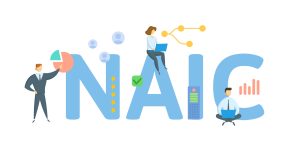Understanding the NAIC—Is the NAIC a Trade Organization for the Insurance Industry?

NAIC, National Association of Insurance Commissioners
What exactly is the National Association of Insurance Commissioners (NAIC)? How should the public understand this institution, its history, and role within the insurance marketplace and as an organization watching out for policyholders?
In a 1995 joint meeting of the NAIC and the National Coalition of Insurance Legislatures (NCOIL), NAIC general counsel Susan Martin stated that the NAIC was a private trade organization.1 This conflicting identity crisis becoming public was described as follows:
In the midst of this expansion of its activities, staff, and funding, the NAIC has suffered something of an identity crisis. In 1995 the NAIC officially defined itself as a private trade organization. Around the same time, Robert M. Willis, District of Columbia insurance commissioner, described the NAIC as a ‘trade organization’ and distinguished his role as a public official from his role as a member of the NAIC. Similarly, in a 1994 opinion, U.S. District Judge Peter Leisure stated that the NAIC was not a government body but ‘a private trade association composed of government regulators from different states.’
None of these self-definitions squared with the NAIC’s active and central role in the processes of state insurance regulation. In 1995, at the urging of some NAIC members, and in particular James Schacht, acting Illinois insurance commissioner, an NAIC working group prepared a written report discussing the NAIC’s status. The group split over whether the NAIC was ‘a group of public officials imbued with the public trust’ or ‘an instrumentality of the states.’ The membership of the NAIC ultimately concluded that it had characteristics of both. Schacht stated, ‘At least we know we are not a trade organization.’
Regardless of the NAIC’s difficulties defining itself, it is clear that the NAIC is a private rather than a governmental entity. This status carries two important implications: first, the NAIC has no power to compel the states or the industry, and second, the NAIC is a completely self-governing entity, neither accountable to voters nor subject to government oversight. Thus, although the NAIC has assumed a central and national role in insurance regulation, acting in many ways as a federal agency, it cannot sanction regulators or insurers, and it is not subject to various mechanisms designed to ensure fair and open regulatory policy making and processes…
As a result, the NAIC is closely identified with the insurance industry. Capture of regulatory agencies by the regulated industry is a much-described and much-discussed phenomenon. However, the problem of capture as it exists in other regulatory contexts is minimal when compared to the problem in the insurance industry. The industry directly funds the NAIC. Each year the NAIC assesses insurance companies a fee, based on premium volume, to file information in its centralized databases. In recent years, database fees account for approximately half of the NAIC’s revenues. In contrast, state assessments account for less than five percent of revenues. As a result, members of the industry view the NAIC as part of the industry and accountable to the industry. Furthermore, much of the NAIC’s work often appears to be in direct response to the industry.2
 Prof. Shauhin Talesh
Prof. Shauhin Talesh
Another study of the NAIC, A New Institutional Theory of Insurance,3 came to the same conclusion about the NAIC being dominated by the insurance industry, which thereby regulates itself through the NAIC:
Insurance regulation in the United States is largely governed by the states. State insurance departments often have broad, legislatively delegated powers to enforce state insurance laws, promulgate rules and regulations, and conduct hearings to resolve disputed matters. This decentered approach allows each state flexibility concerning issues relating to fair pricing of insurance, protecting against insurance company insolvency, preventing unfair practices by insurance companies, and ensuring availability of insurance coverage. States have the discretion to approve insurance rates, conduct financial examinations of insurers, license companies, agents, and brokers, and monitor claims handling. Each state has a chief insurance regulator often known as the commissioner, superintendent, or director of insurance who is responsible for regulating the insurance markets in a state and enforcing the state’s regulatory laws. Despite the existence of the state regulatory system, there has been a move toward centralization, uniformity, and cooperation in insurance regulation largely driven by the NAIC.
Formed in 1871, the NAIC is a voluntary association of insurance commissioners from each of the fifty states, the District of Columbia, and the United States territories. The NAIC’s stated goals are to ensure the solvency of insurers, protect policyholders, and preserve state regulation as well as the NAIC itself. Because the NAIC centralizes and unifies insurance regulatory policy across states, insurers are not subject to various state laws that are ambiguous with respect to compliance and which vary from state to state.
The history of the NAIC, therefore, reflects a somewhat contradictory focus on preservation of autonomous state regulation and uniformity of regulation. The NAIC has centralized many basic regulatory functions and operates as a quasi-federal agency by attempting to enforce national standards across states. Similar to federal regulators in other industries, the NAIC performs centralized duties including setting forth requirements for standard forms for insurance companies’ annual financial statements, coordinating financial examinations of insurance companies, rating non-U.S. insurers for the states, providing periodic review and accreditation of state insurance departments, and drafting model laws and regulations that are often adopted by state legislatures. The NAIC, in fact, proved instrumental in securing state regulation over insurance. For example, as a result of the NAIC’s Financial Regulation and Solvency Accreditation Program, state solvency regulation is essentially uniform across states and states undergo regular on-site reviews to increase the chance of proper implementation and compliance with regulatory rules.
The NAIC, however, operates as a quasi-public and quasi-private institution. NAIC membership is composed of state officials who are accountable to the governors that appoint them or the general electorate. NAIC members also have regulatory powers and responsibilities in their states and also have influence in their own state’s legislatures. While sometimes thought of as ‘a group of public officials imbued with the public trust’ or ‘an instrumentality of the states,’ the NAIC officially defined itself in 1995 as a private trade organization. Thus, the NAIC has no power to compel the states or the industry to take action. Moreover, because the NAIC is a self-governing entity, it is neither accountable to voters nor subject to government oversight. Although the NAIC plays a central and national role in insurance regulatory policy, it has little power to sanction insurers or regulators and it is not subject to administrative rules such as the Administrative Procedure Act of 1966 and the Freedom of Information Act.
As a result, the insurance field has been able to mediate the meaning of insurance regulation and policy through its involvement with the NAIC. First, the vast majority of the NAIC’s budget comes from assessments of the insurance industry. Legal analysts have highlighted how the financing of the NAIC allows the insurance industry greater influence:
The industry directly funds the NAIC. Each year the NAIC assesses insurance companies a fee, based on premium volume, to file information in its centralized databases. In recent years, database fees account for approximately half of the NAIC’s revenues. In contrast, state assessments account for less than five percent of revenues. As a result, members of the industry view the NAIC as part of the industry and accountable to the industry. Furthermore, much of the NAIC’s work often appears to be in direct response to the industry.
Second, the structure of the NAIC not only allows for substantial industry involvement in regulatory policy but provides an efficient and centralized mechanism for the adoption of policies and laws that the insurance field approves. It also provides a place for the insurance field to lobby against NAIC standards if committee negotiations prove unfruitful.
While reading these articles, I kept thinking, “Chip, you are the biggest dummy. Why didn’t you realize this long ago?” Two articles I wrote last month, What is the History of Market Conduct Studies? and Do Market Conduct Claims Studies Effectively Regulate Wrongful Insurance Company Claims Practices?, noted how insurance company consultant McKinsey & Company made the framework for market conduct studies and that they are largely ineffective when it comes to overseeing and protecting against wrongful claims conduct:
Effective market conduct studies regarding insurance company claims practices are greatly needed. There is a lot more about this story and a lot more that those in power who are enlightened and truly want to have a purposeful life helping policyholders can do to make the system better. However, it is important to understand that when the concept for market conduct studies was first implemented, the entity providing the advice to those regulating, McKinsey & Company, was already in bed with those about to be regulated…
It makes so much more sense when one realizes that the insurance industry has “captured” the NAIC as an institution to make the regulations it wants.
Thought For The Day
The general population doesn’t know what’s happening, and it doesn’t even know that it doesn’t know.
—Noam Chomsky
A Second Thought For The Day
You big dummy!
—Redd Foxx acting as Fred Sanford in “Sanford and Son”
1 L.H. Otis, Just What Is the NAIC? Legal Status Up for Grabs, Nat’l Underwriter (Prop. & Cas./Risk & Benefits Mgmt. ed.), May 22, 1995.
2 Susan Randall, Insurance Regulation in The United States: Regulatory Federalism and the National Association of Insurance Commissioners, 26 Fla. St. U. L. Rev. 625 (1999).
3 Shauhin Talesh, A New Institutional Theory of Insurance, 5 UC Irvine L. Rev. 617 (2015).







